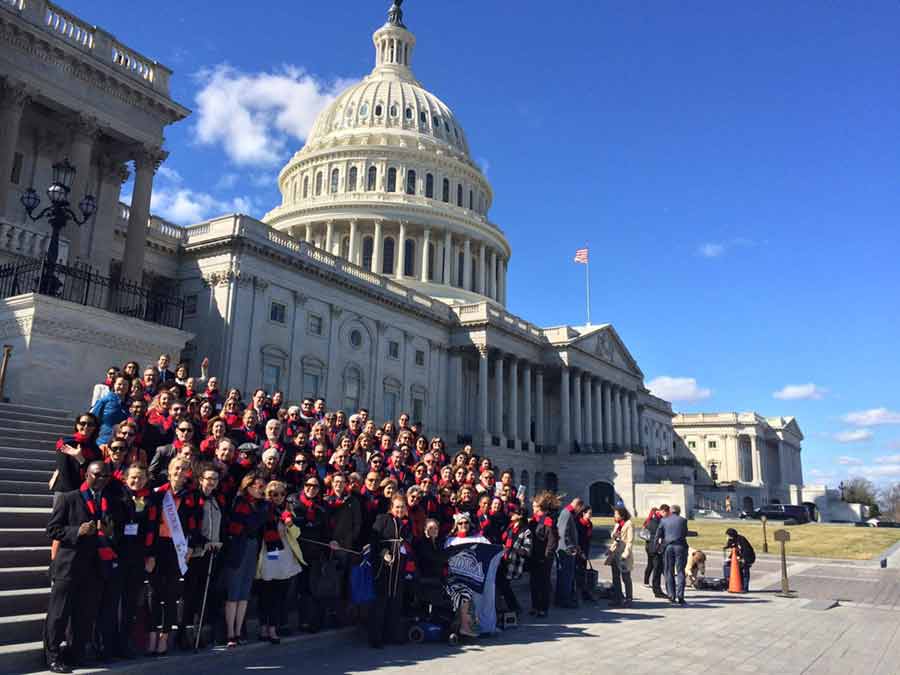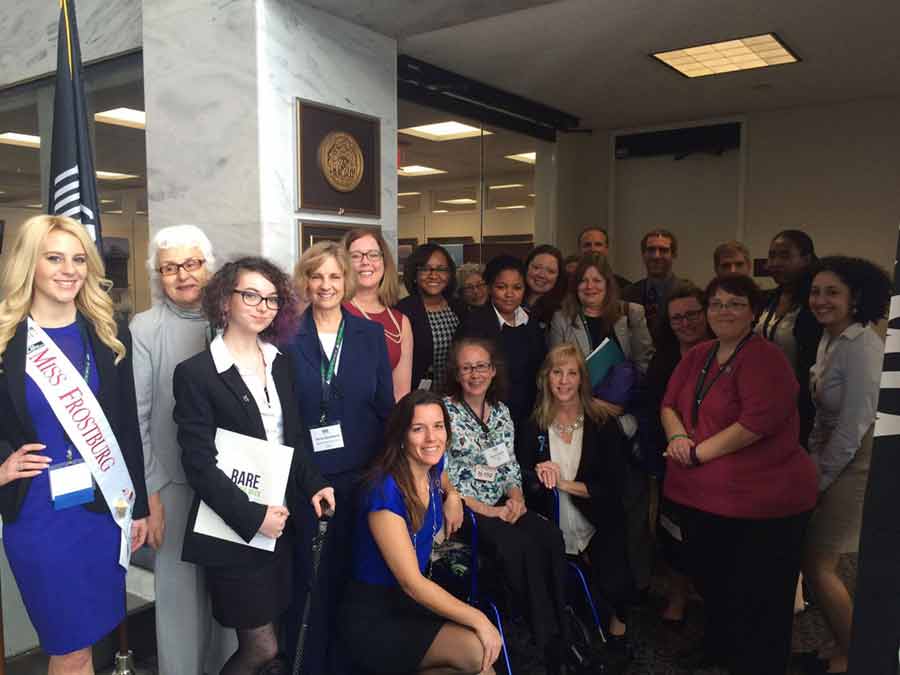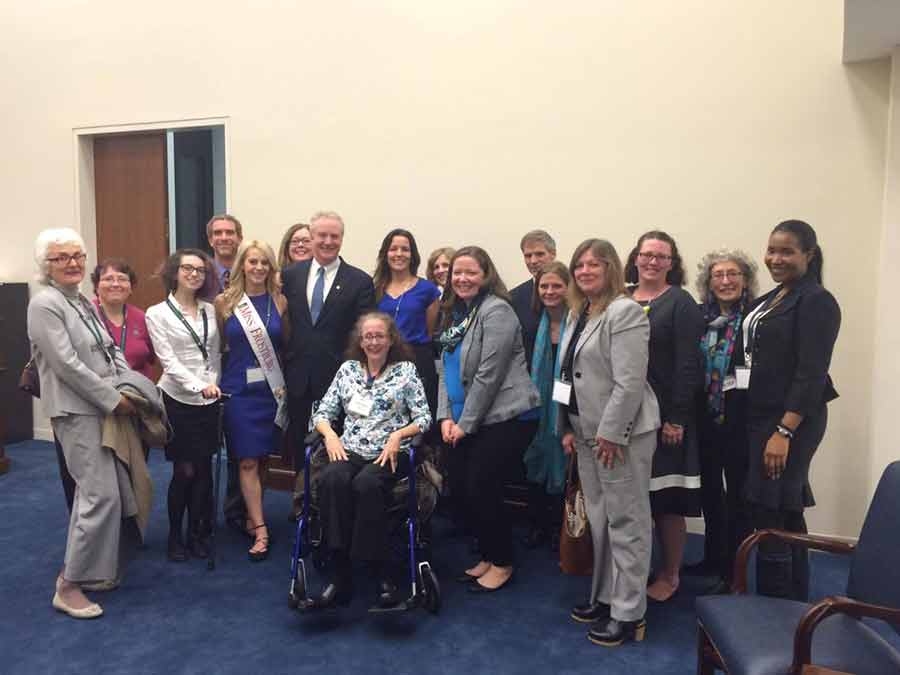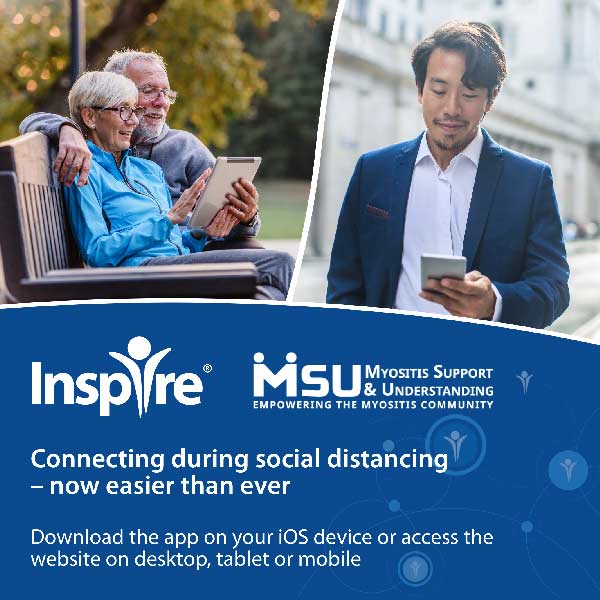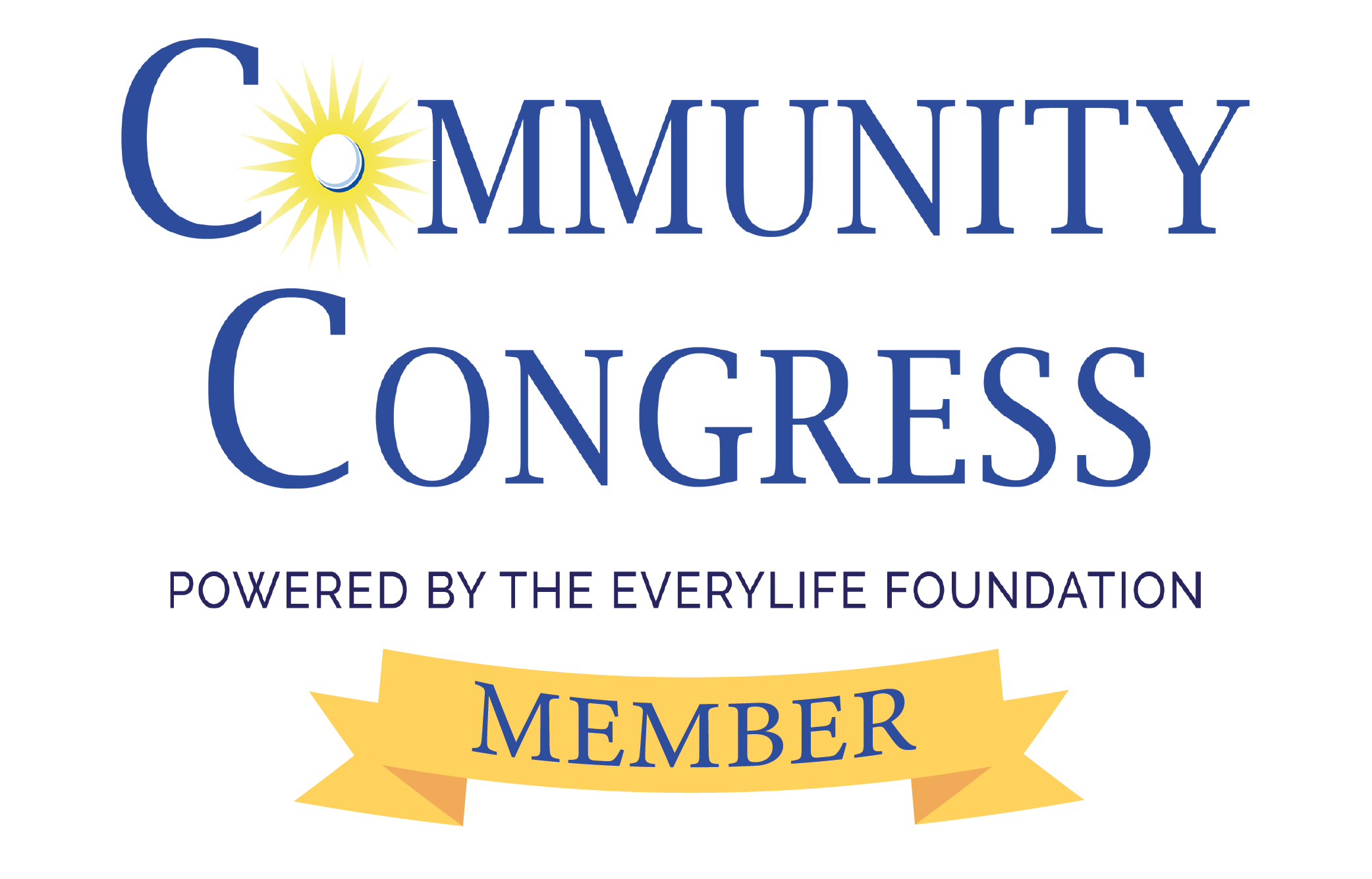Rare Disease Week 2017 on Capitol Hill
About this piece
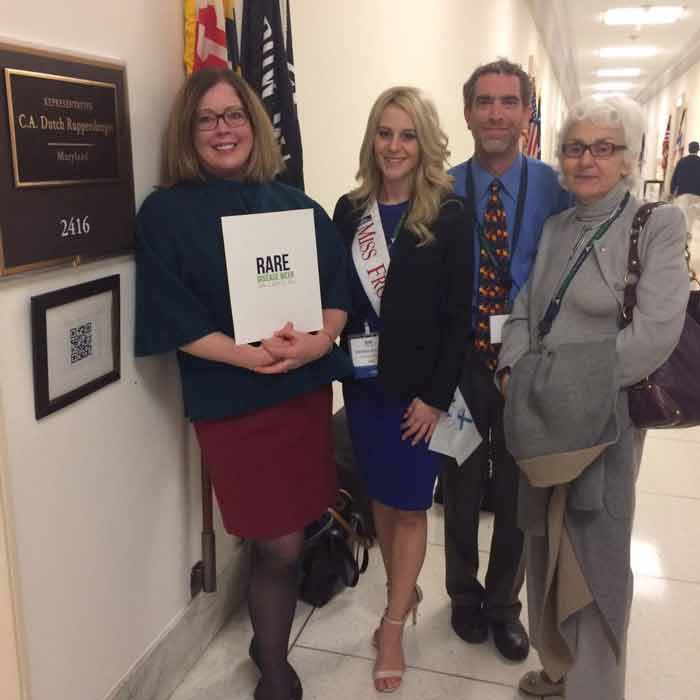 Rare Disease Day 2017 was held on February 28th. It is always held the last day of February. This year, Rosemary McNamara attended Rare Disease Week on Capitol Hill and she took a lot of notes and recently did a video information session with MSU and fellow patients and care partners.
Rare Disease Day 2017 was held on February 28th. It is always held the last day of February. This year, Rosemary McNamara attended Rare Disease Week on Capitol Hill and she took a lot of notes and recently did a video information session with MSU and fellow patients and care partners.
This blog piece serves as an addition to her video to provide you with short pieces of information and links to the sites she mentions during the video.
Please note that some of the following information is directly from RDLA’a flyer.
RDLA is designed to be a clearinghouse and advocacy center for all rare disease legislation. They provide free resources, tools, and events for patients, caregivers, and organizations
Most patients don’t realize that public policy impacts the development of therapies and cures, access to those treatments and their affordability. Ensuring rare disease patients have an opportunity to influence these life and death policy decisions is RDLA’s top priority.
Rare Disease Legislative Advocates (RDLA)
RDLA is a program of the EveryLife Foundation that gives patient advocates and organizations the tools they need to advocate for public policy at the state and federal levels
The EveryLife Foundation for Rare Diseases is a 501( c ) (3) nonprofit dedicated to accelerating biotech innovation for rare disease treatments through science-driven public policy.
You can find RDLA at 440 First Street NW, Suite 430, Washington, DC 20001 or call (202)-697-RARE(7273)
RDLA online: www.rareadvocates.org
The EveryLife Foundation online: www.EveryLifeFoundation.org
Rare Disease Week Schedule
Monday-Rare Disease Day at NIH
Screening of documentary Up For Air, a film about cystic fibrosis
Tuesday- Legislative Conference
Wednesday- Lobby Meeting in US Senate and House Office Building
Advocates met with their state representatives
Rare Art Reception that evening to honor contest winners
Thursday- Rare Disease Caucus Briefing
Rare Disease Legislative Advocates (RDLA)
Stay informed on key policy issues
- Monthly interactive webinars highlight urgent state and federal legislative issues
- RareAdvocates.org serves as a clearinghouse for policy and legislation
- Monthly action alert blasts share the latest news, policy and legislative actions and events
- Event calendar lists policy events such as Capitol Hill briefings and roundtables
- Facebook and Twitter raise visibility of resources, action alerts, and events @RareAdvocates
Online Advocacy Tools at RareAdvocates.org
- See how your legislators voted in our Rare Disease Congressional Scorecard
- Action Alerts to support your legislation:
- Call or email Members of Congress or state legislators for urgent action
- Promote a sign-on letter for patient advocacy organizations to support/oppose legislation and policy
- Circulate petitions regarding public policy or legislation
Advocacy Events
- Rare Disease Week on Capitol Hill
- In-District Lobby Days
- Rare Disease Congressional Caucus
- Rare Voice Awards
Rose's key takeaways from the meeting
Below are some of Rose’s key takeaways from the meeting and week. There are bills and legislation she mentions. To learn more about a piece of legislation, visit Congress.gov
Rose was encouraged that there was bipartisan support for rare diseases. There is a Rare Disease Congressional Caucus.
The co-chairs are Rep. Leonard Hatch (R-NJ) /Rep. G. K. Butterfield (D-NC) along with Senators Orrin Hatch (R-UT) / Amy Klobuchar (D-MN)
The Orphan Products Extension Now, Accelerating Cures and Treatments (Open Act) Bipartisan sponsorship in House and Senate
Representatives Bilirakis (R-FL) Butterfield (D-NC) along with Senators Hatch (R-UT) and Klobuchar (D-MN)
HR #1223 / waiting for it to be introduced in the Senate
This bill would create therapies for a rare disease indication. Companies that repurpose a drug for a rare disease indication will get a six-month exclusivity extension. We all use therapies like IVIG, Cellcept, Rituximab and other to treat myositis. This will provide incentives for drug companies to do the research.
Key Talking Points when speaking to your representatives
- There are more than 7,000 rare diseases, 95% of which have no FDA-approved treatment. The OPEN ACT could potentially double the number of treatments available to rare disease patients
- Rare-purposed drugs will be priced at major market prices, bringing down the average cost of rare disease drugs
- Fewer rare disease patients will need to use off-label medications which are potentially ineffective. Off-label drugs are often not reimbursed placing a huge financial burden on patients
The 21st Century Cures Act
Background: In 2014, the House and Energy and Commerce Committee began a bipartisan initiative to improve biomedical innovation in the US. This effort would come to be known as the 21st Century Cures initiative and was led by Representatives Fred Upton R-MI) and Diana De Gette (D-CO) Under their leadership, the committee convened a wide variety of stakeholders from the biomedical community to provide input into legislation
Patient Advocacy: Throughout the legislative process, rare disease patients and patient organizations engaged with the House and Senate in hearings, action alerts and meetings on Capitol Hill. This two-year advocacy campaign had highs and lows, but for many, the bill represented a bipartisan opportunity to make progress in advancing treatments for rare disease patients.
The Victory: After moving through the House with a strong bipartisan vote of 392-26 and the Senate with a vote of 94-5, the 21st Century Cures Act advanced to the White House. The Act was signed in to law by President Obama on December 13th, 2016. “
The Hope Act was part of the 21st Century Cures Act
This provides priority voucher for a future drug when a company develops a drug for a pediatric rare disease.
Pediatric Priority Program
Cancer Moonshot
Patient Voice
Allowing for patients to provide feedback and have a voice in the development of the drugs
Mental Health
Opioid Crisis
Additional legislation:
Best Pharmaceuticals for Children Ac t(BPCA) 2002
Offers incentives for conducting clinical trials in children
Prescription Drug User Fee Act (PDUFA)
“The Act provided that the FDA was entitled to collect a substantial application fee from drug manufacturers at the time a New Drug Application (NDA) or Biologics License Application (BLA) was submitted, with those funds designated for use only in Center for Drug Evaluation and Research (CDER) or Center for Biologics Evaluation and Research (CBER) drug approval activities. In order to continue collecting such fees, the FDA is required to meet certain performance benchmarks, primarily related to the speed of certain activities within the NDA review process.” — Info provided by Wikipedia
PDUFA continued
This is a key funding agreement in order to have accelerated reviews at the FDA. There will be hearings in March/April. For more information contact Max Bronstein, Chief Advocacy and Science Policy Officer at the Everylife Foundation mbronstein@everylifefoundation.org
NIH/FDA
“Funding for Health Research and Biomedical Innovation"
Support robust funding for the National Institutes of Health (NIH), The Food and Drug Administration (FDA), and the 21st Century Cures implementation
NIH and FDA are vital for advancing rare disease research and innovation. Funding for NIH has struggled to keep pace with inflation and is critical for advancing the basic science needed to enhance our understanding of rare diseases. In addition, the NIH Clinical Center and Undiagnosed Disease Program provide life-saving resources for rare disease patients searching for answers.
The FDA is substantially underfunded given the Agency regulates 25% of the national economy. The FDA needs additional funding to fully implement the changes required by the 21st Century Cures Act, and to help improve the drug review and approval process.
House and Senate Talking Points:
Advocating is tough work but we ALL need to get involved as we each have a voice. One voice is small, all of our voices together and we can make a difference!
- We request a 2$ billion increase in discretionary funding for the National Institutes of Health (NIH) for fiscal year 2018
- We request a $2.8 billion increase in discretionary funding for the Food and Drug Administration (FDA) in fiscal year 2018
- Ensure that the supplemental funds authorized in the 21st Century Cures Act are provided., including $500M for the NIH Innovation Fund and $60M for the FDA Innovation Fund.”
- They also need to get a Director of the FDA in place. Hopefully, one who has an interest in rare diseases.
Rose's thoughts on the week, in her words
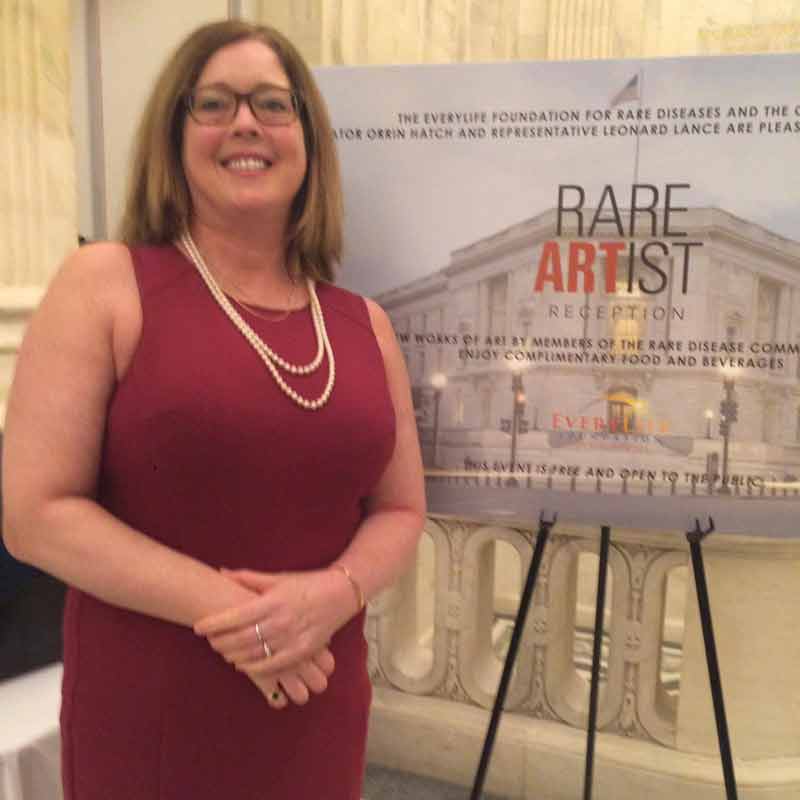 It was nice to see so many people to gather together to advocate for rare diseases. While Myositis is a small community, together we make a strong herd of zebras.
It was nice to see so many people to gather together to advocate for rare diseases. While Myositis is a small community, together we make a strong herd of zebras.
I noticed that in my state there were groups of people with the same disease state. They definitely made an impact when we spoke to the staffers and the congressmen and senators. One senator, Chris Van Hollen from Maryland actually knew some of the people in the room and had been working with them. Squeaky wheel gets the grease. I hope we can get more people to attend next year. Travel stipends are available from the Everylife Foundation on a first come first serve basis. There are two allotted from each state up to $1000. This makes it affordable. I was able to stay with my friend whose son has CF.
I was impressed with how interested they were in hearing our story. Myositis was a new one for them. But, we have common concerns with other rare diseases since we use many of the same meds and have many of the same concerns.
This group, RDLA, is doing some amazing things for us. They have great connections and know their way around Congress.
I handed out MSU information to everyone I could. Thank you, Jerry Williams (MSU), for sending them to me. The staffers loved the pens!
I tried to rally people to submit artwork for the Rare Artist Exhibit. There appears to be a strong contingency of people from certain disease states who were big winners. The key is to have people making an effort to vote for the artwork of their community. The winner not only gets prize money but gets to make a thank you speech where they can highlight their disease. This is a fun and free way to get Myositis noticed!
There will be videos of the lectures loaded on their website at rareadvocates.org in a few weeks if you want to listen to the lectures
Definitely like the RDLA Facebook page to get more information as well.

